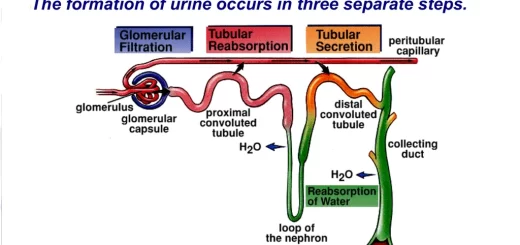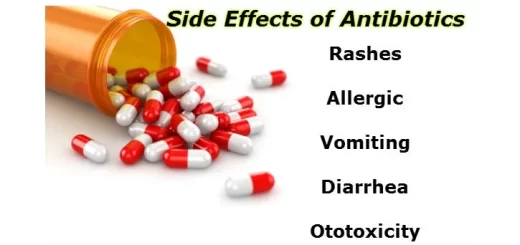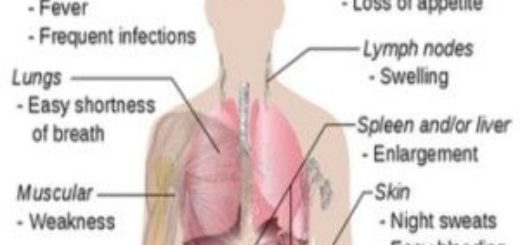Coronavirus disease (COVID-19) harms, Signs, Symptoms and Self-monitoring instructions
Coronavirus disease was referred to as “2019 Novel Coronavirus” or “2019-nCoV”, It causes severe illness & pneumonia in some people, Coronavirus disease began spreading in people in December 2019, It was first identified in Wuhan, Hubei Province, China, It is not the same as the coronaviruses that circulate among humans & cause mild illness, such as the common cold.
What is coronavirus?
Coronavirus can cause illness in animals or humans, It is a new virus that can cause an infection in people, including severe respiratory illness, The most recently discovered coronavirus causes coronavirus disease COVID-19. currently, there is no vaccine to prevent COVID-19 infection, and there is no specific treatment, The best way to prevent infection is to avoid being exposed to the virus.
How does coronavirus spread?
Coronavirus spreads through close contact with an infected person; mostly face-to-face or within a household, it can’t jump across a room or be carried for long distances in the air. COVID-19 can spread to others when an infected person coughs or sneezes, this is similar to how influenza is spread.
Coronavirus is found in droplets from the throat and nose, When someone coughs or sneezes, other people near them can breathe in those droplets, The virus can spread when someone touches an object with the virus on it, If that person touches their mouth, face, or eyes the virus can make them sick.
Coronaviruses are common in both humans and animals, seven strains of human coronaviruses have been identified, Four of these strains are found in Wisconsin and elsewhere around the world, These common human coronaviruses cause mild to moderate respiratory illness, new coronaviruses emerge, Coronavirus Disease 2019 publication P02592.
Symptoms of COVID-19
People who have confirmed COVID-19 infections have a range of symptoms, from people with little to no symptoms to people being severely sick and dying. Symptoms can include Fever, Cough & Shortness of breath, the symptoms may appear in as few as two days or as long as 14 days after contact with someone who has COVID-19.
COVID-19 can cause damage to the lungs, which leads to fluid leaking from small blood vessels in the lungs, The fluid collects in the lungs’ air sacs, or alveoli, Which makes it difficult for the lungs to transfer oxygen from the air to the blood.
Some gastrointestinal symptoms such as nausea or diarrhea, although these symptoms are much less common than problems with the lungs. COVID-19 can affect the heart and blood vessels, This may show up as irregular heart rhythms, not enough blood getting to the tissues, or blood pressure low enough that it requires medications. When liver cells are inflamed or damaged, they can leak higher than normal amounts of enzymes into the bloodstream.
Steps to help prevent the spread of respiratory viruses
You should wash your hands often with soap and running water for at least 20 seconds, especially before eating and after going to the bathroom, blowing your nose, coughing, or sneezing, you should dry with a paper towel or hand dryer, When you do not have soap and water, use an alcohol-based hand sanitizer with at least 60% alcohol, you should wash hands with soap and water if hands are visibly dirty.
You should not touch your eyes, nose, and mouth with unwashed hands. You should avoid close contact with people who are sick, you should stay at home when you are sick. you should cover your nose and mouth with a tissue when you cough or sneeze, then throw the tissue in the trash, If you don’t have a tissue cough or sneeze into your upper sleeve or elbow. you should clean and disinfect frequently touched objects and surfaces using a regular household cleaning spray or wipe.
Health care providers may recommend that some people who have weakened immune systems wear face masks in public for protection from respiratory infections. Healthy people may choose to wear surgical masks if they are caring for someone who is sick with respiratory illness at home. At this time, CDC does not recommend that people who are well wearing a facemask to protect themselves from respiratory illnesses, including COVID-19.
The use of a mask may be recommended, Masks may be used by ill people to protect others, The people with respiratory symptoms (e.g. cough, fever) should use masks specifically designed for use in health care settings, people are going to a clinic for medical care are asked to wear surgical masks to prevent exposing other patients or health care providers to respiratory droplets, These are used in other public situations by ill people to protect others.
All travelers should avoid nonessential travel to countries with Level 3 Travel Notices, Older adults and those with chronic conditions should avoid all nonessential travel that put them at increased risk for more severe diseases, nonessential travel such as long plane trips, and cruise ships, all travelers should defer all cruise ship travel worldwide.
Quarantine
The quarantine is a preventive step to help stop the spread of diseases, It is the isolation of people who are not sick, but who were exposed to a disease, Many people become sick within 14 days of their exposure if they were infected of COVID-19, Quarantining yourself while you are not sick allows you to limit the number of people you have a contact within the event you become sick, so, you will limit the number of people who could become sick from having contact with you because sometimes people can spread the disease before they know that they are sick.
How do you self-quarantine yourself?
You should stay at home, so, do not go to school, work, public areas, or attend large gatherings, such as parties, weddings, meetings, and sporting events, If you need medical care, you should call your health care provider. You should wash your hands often & practice good hygiene, As long as you feel healthy, you may leave home to go grocery shopping or to visit the pharmacy, Try to avoid busy times of the day.
You shouldn’t go out to restaurants or have guests in your house, Postpone any travel, If travel is necessary, you should contact your local health department first for instructions, if you choose to travel and become ill while you are away, you may not be able to return home using public transport until you are well and released from possible isolation by the local public health department.
You should postpone all nonessential medical appointments (for example, dental cleaning, eye exam, routine check-up) until you are out of quarantine, When you have an essential appointment during the quarantine, please call your provider ahead of time and tell them that you traveled to an area of the world experiencing a COVID-19 outbreak, your local health department may also be able to help you.
You must minimize contact with people and animals in your home, you should not share personal household items such as dishes, towels, and bedding. When you need medical care, call your health care provider, call ahead before you go to your doctor’s office or to an emergency room.
Self-monitoring instructions
You should take your temperature twice a day with a thermometer, A fever is typically a temperature of 100.4°F or greater, If you do not have a thermometer, symptoms of fever may include having chills or sweats, You should watch for fever, cough, or trouble breathing.
You should not use public transportation, ride-sharing, or taxis, If you have a facemask, wear it if you need to be around other people. You should stay at home if you feel sick. You should continue healthy habits: exercise, drink water & get plenty of sleep.



